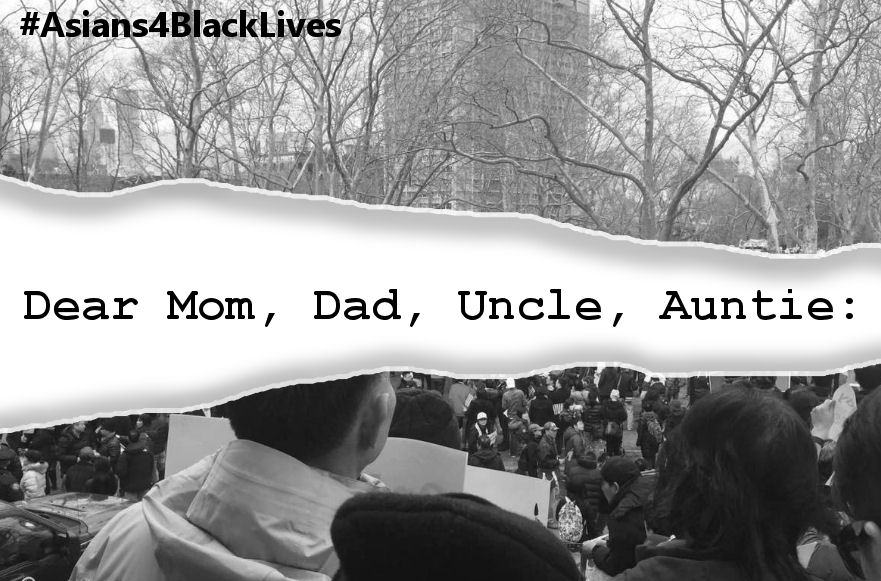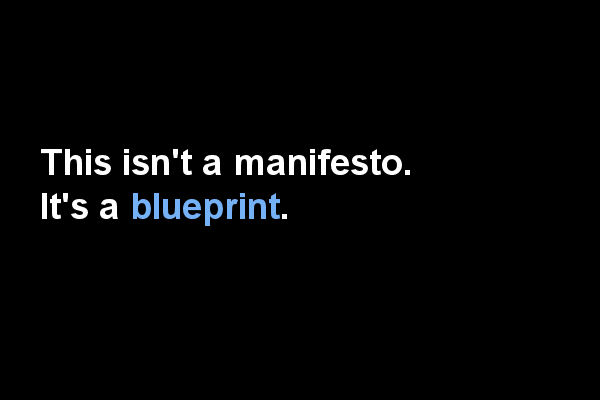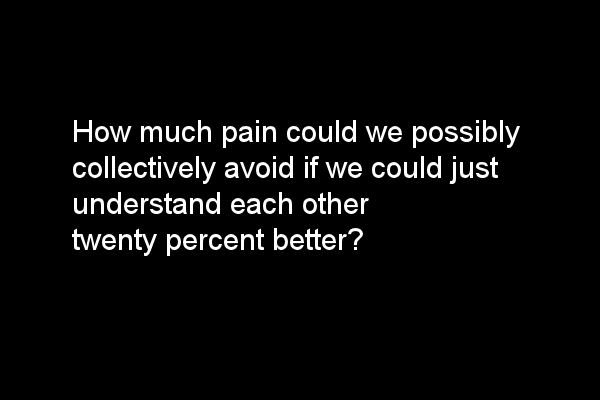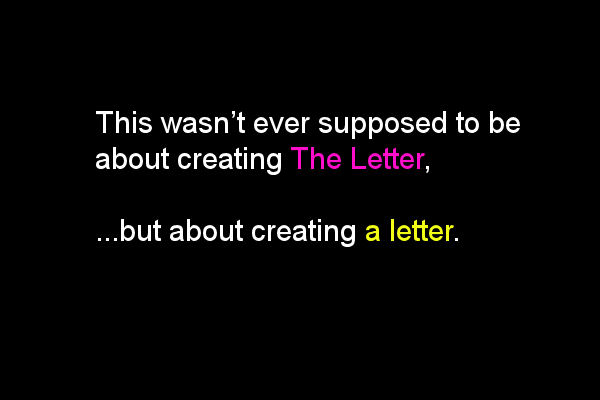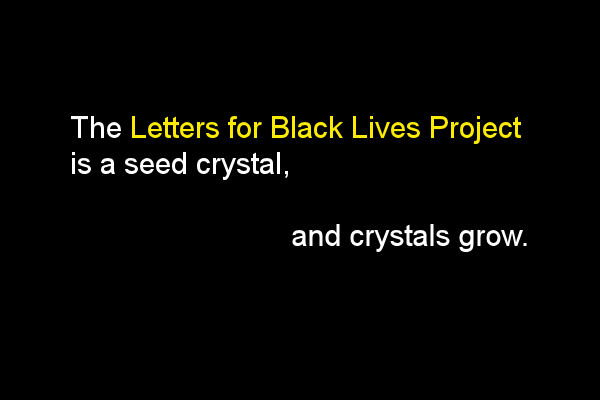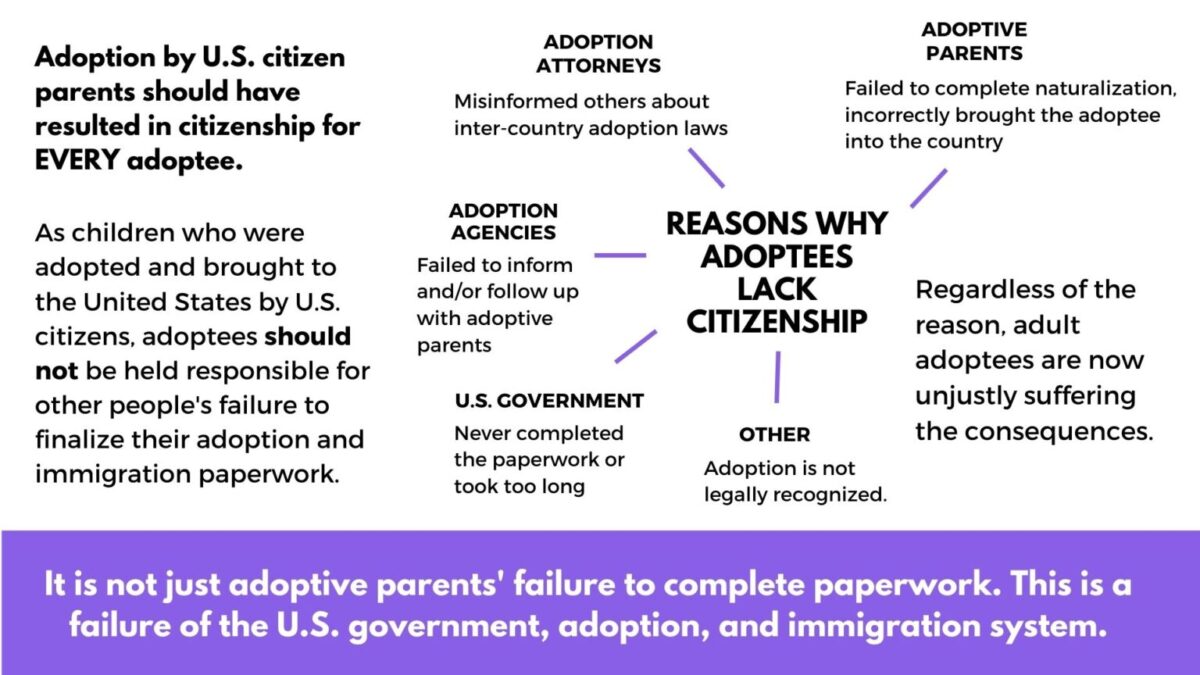Last week, America once again recoiled under the weight of this country’s ongoing criminalization of the Black body when two Black men were shot and killed by police in Baton Rouge, Louisiana and in Falcon Heights, Minnesota in less than two days. Demonstrators once again took to the streets to raise the banner of Black Lives Matter to protest the growing militarization of law enforcement that disproportionately victimizes people of colour, and Black and Native people in particular.
AAPI have also added our voices to this growing coalition for BlackLivesMatter, many of us writing think-pieces to document why our community must fight to ensure that this society places value in Black lives. Yet, while many of those pieces are targeted towards English-speaking progressive AAPI youth, they rarely permeate other (often non-English-speaking) spaces where other Asian Americans who choose against Black lives digitally congregate. As a consequence, our community remains politically Balkanized. It comes as no surprise, therefore, that a question I am routinely asked in workshops I give about AAPIs and intersectional race politics is: How do I bridge that divide? How do I talk to my parents about anti-blackness?
Less than a week ago, AAPI activist Christina Xu (@xuhulk, who is also working on Multi Entry, a creative ethnography project about contemporary Chinese culture) sent the tweet that would snowball into a crowd-sourced open letter (penned originally in English, and currently being translated by volunteers into over twenty languages) authored by well-over forty volunteer contributors and translators (and counting). Now known as the Letters for Black Lives Project (@LettersForBlackLives), the open letter has inspired many as a positive strategy for Asian Americans to build solidarity with Black Lives Matter by taking ownership of the problematic politics of those within our community. Cited in yesterday’s National Call for AAPI Solidarity with Black Lives Matter (#AAPICall4Solidarity, organized by APALA), the Letters for Black Lives Project has taken the AAPI community by storm.
Last night, I sat down with six of the Letters Project’s coordinators — including Letters Project founder, Christina Xu — to talk about their thoughts about the project, and why it matters for the AAPI community; Poetically, it was also the first time many of the Letters Project’s coordinators actually met one another face-to-face (albeit through video streaming). What follows is a transcript of our hour-long conversation, edited for length and clarity.
Scroll to the bottom of this interview for the full English text of the first letter from the Letters for Black Lives Project.
Christina, the Letters for Black Lives Project had its inception in a tweet you sent last week in the wake of the shooting deaths of Alton Sterling and Philando Castile. What inspired you to create the letter?
 Christina (@xuhulk): Ha! To be honest, I tweet sometimes before I think! In seriousness, that morning (of July 8th), I woke up and social media was buzzing about the shooting of Philando Castile in Minnesota, and in particular, rumours were flying about the shooter being potentially Asian American. Previously with the shooting of Akai Gurley, I had been involved in a series of difficult conversations about [former NYPD officer, and Gurley’s shooter] Peter Liang, and Thursday morning, I had a visceral reaction: “I don’t want to deal with this, again.” So, I was on the train going to work, and I was tweeting my thoughts about how we need to talk to our communities. That’s when I got the idea to write a letter, because I knew I would be too distracted that day to do any other work. I got on social media and asked for help, hoping that there might be even just a few other people who might want to have a tool to have this same conversation with their families. I hoped for maybe 15-20 people to help me write a Chinese translation of a letter to our parents. Within a few hours, we had well surpassed this number, and then the Letters for Black Lives Project just kind of blew up.
Christina (@xuhulk): Ha! To be honest, I tweet sometimes before I think! In seriousness, that morning (of July 8th), I woke up and social media was buzzing about the shooting of Philando Castile in Minnesota, and in particular, rumours were flying about the shooter being potentially Asian American. Previously with the shooting of Akai Gurley, I had been involved in a series of difficult conversations about [former NYPD officer, and Gurley’s shooter] Peter Liang, and Thursday morning, I had a visceral reaction: “I don’t want to deal with this, again.” So, I was on the train going to work, and I was tweeting my thoughts about how we need to talk to our communities. That’s when I got the idea to write a letter, because I knew I would be too distracted that day to do any other work. I got on social media and asked for help, hoping that there might be even just a few other people who might want to have a tool to have this same conversation with their families. I hoped for maybe 15-20 people to help me write a Chinese translation of a letter to our parents. Within a few hours, we had well surpassed this number, and then the Letters for Black Lives Project just kind of blew up.
The Letters Project is currently being coordinated by several volunteer coordinators through Slack, a social media platform popular among progressive organizers. How did you hear about the letter, and what inspired you to get involved?
 Gary (@garychou): I teach with Christina at a graduate program in New York, and I’m also involved in this life project I launched called Orbital. I’ve also had previous organizing experience. In particular, I helped orchestrate a student takeover of Nassau Hall at Princeton in 1995 (to demand ethnic studies). The Letters Project has given me a chance to revisit my time as a student activist.
Gary (@garychou): I teach with Christina at a graduate program in New York, and I’m also involved in this life project I launched called Orbital. I’ve also had previous organizing experience. In particular, I helped orchestrate a student takeover of Nassau Hall at Princeton in 1995 (to demand ethnic studies). The Letters Project has given me a chance to revisit my time as a student activist.
 Katherine (@panacirema): I’m Twitter friends with Christina and Gary, although we might have only met for ten seconds twice. I became involved with the Letters Project because it really resonated with me. It echoed a lot of what I wanted to say to my own parents. I think that’s why the first letter struck a chord with people: even though all of our parents are different, there’s a kernel embedded within the letter that’s common across many of our experiences.
Katherine (@panacirema): I’m Twitter friends with Christina and Gary, although we might have only met for ten seconds twice. I became involved with the Letters Project because it really resonated with me. It echoed a lot of what I wanted to say to my own parents. I think that’s why the first letter struck a chord with people: even though all of our parents are different, there’s a kernel embedded within the letter that’s common across many of our experiences.
 Lee-Sean (@leesean): I also know Christina and Gary since we all live in New York. Although I didn’t see Christina’s original tweet, I saw a Facebook message that shared the same message. I’ve struggled with how to engage these issues before, even as my professional work is in communications for non-profit activists and climate change groups — and in particular, working with paid translators. I’ve never done this kind of work as a volunteer, but I jumped into the Letters Project because I never really talked to my parents about these issue even though they are personally important to me. My partner is African American, and coincidentally, the weekend prior to the shooting of Alton Sterling and Philando Castile, we had engaged a conversation about “driving while Black.” The Letters Project was an opportunity to volunteer virtually around these important and concrete issues.
Lee-Sean (@leesean): I also know Christina and Gary since we all live in New York. Although I didn’t see Christina’s original tweet, I saw a Facebook message that shared the same message. I’ve struggled with how to engage these issues before, even as my professional work is in communications for non-profit activists and climate change groups — and in particular, working with paid translators. I’ve never done this kind of work as a volunteer, but I jumped into the Letters Project because I never really talked to my parents about these issue even though they are personally important to me. My partner is African American, and coincidentally, the weekend prior to the shooting of Alton Sterling and Philando Castile, we had engaged a conversation about “driving while Black.” The Letters Project was an opportunity to volunteer virtually around these important and concrete issues.
 Sara (@saraiume): Before coming on as a coordinator, I didn’t know any of the other coordinators. I saw the Project on my Twitter and retweeted it, and also sent a message saying I wanted to help. After the events of last week, I was frustrated that I wasn’t able to do anything actively; the Letters Project gave me a chance to dive in. I’m a college junior and president of my campus’ Asia Club, but this is my first time doing any sort of activism at this scale.
Sara (@saraiume): Before coming on as a coordinator, I didn’t know any of the other coordinators. I saw the Project on my Twitter and retweeted it, and also sent a message saying I wanted to help. After the events of last week, I was frustrated that I wasn’t able to do anything actively; the Letters Project gave me a chance to dive in. I’m a college junior and president of my campus’ Asia Club, but this is my first time doing any sort of activism at this scale.
 Cordelia (@thebestsophist): My first thought about the Letters Project was, “this is amazing.” I work professionally in the non-profit sector, and my problem with the non-profit world is that it is organized in a top-down fashion. My interest is in trying to make community service organizations more responsive to the people whom they serve, and from whom they solicit donations, but too often it doesn’t really happen. The Letters Project is profound because it models how actual stuff gets down with regard to families and communities.
Cordelia (@thebestsophist): My first thought about the Letters Project was, “this is amazing.” I work professionally in the non-profit sector, and my problem with the non-profit world is that it is organized in a top-down fashion. My interest is in trying to make community service organizations more responsive to the people whom they serve, and from whom they solicit donations, but too often it doesn’t really happen. The Letters Project is profound because it models how actual stuff gets down with regard to families and communities.
A unique aspect of the letter is the crowdsourcing approach, which has helped the letter reach out to, and engage, a diverse spectrum of contributors. How do you think crowd-sourcing has impacted how the Letters Project has evolved, and what do you think this means about organizing in and around digital spaces?
 Christina (@xuhulk): Ironically, the group of organizers who could join us in tonight’s conversation are far less ethnically diverse than the contributors who have participated in the first Letter. We’ve got contributors who are South Asian, Southeast Asian, and more. Many of the coordinators are East Asian, and we are aware and mindful of the issue of representation and ethnic diversity. Also — and this might also have something to do with how the letter originated through my personal social media network — many of the Letters Project’s early contributors are in our late twenties or early thirties, and many of us work in tech.
Christina (@xuhulk): Ironically, the group of organizers who could join us in tonight’s conversation are far less ethnically diverse than the contributors who have participated in the first Letter. We’ve got contributors who are South Asian, Southeast Asian, and more. Many of the coordinators are East Asian, and we are aware and mindful of the issue of representation and ethnic diversity. Also — and this might also have something to do with how the letter originated through my personal social media network — many of the Letters Project’s early contributors are in our late twenties or early thirties, and many of us work in tech.
 Sara (@saraiume): They all know more about social media than I do, since they work in tech. The crowdsourcing approach was great, because it got people all across the board to join in the project. Not just people who identify as Asian American, but also Latinx voices, and people Canada. It allowed the letter to take input from many people, and for very legitimate concerns to also be brought up.
Sara (@saraiume): They all know more about social media than I do, since they work in tech. The crowdsourcing approach was great, because it got people all across the board to join in the project. Not just people who identify as Asian American, but also Latinx voices, and people Canada. It allowed the letter to take input from many people, and for very legitimate concerns to also be brought up.
 Gary (@garychou): Crowdsourcing this project was a reflection, not a tactic. The reason why there was so much energy and interest in the Project is because it reflected and resonated with how everyone feels right now. People wanted to be connected with people. We — the coordinators — don’t have anything to do with how anyone felt; that’s timing. The architecture of the letter provided a natural invitation for people to participate because it broke everything down around a collaboration regarding language. As a consequence, everyone was implicitly on the same level as everyone else.
Gary (@garychou): Crowdsourcing this project was a reflection, not a tactic. The reason why there was so much energy and interest in the Project is because it reflected and resonated with how everyone feels right now. People wanted to be connected with people. We — the coordinators — don’t have anything to do with how anyone felt; that’s timing. The architecture of the letter provided a natural invitation for people to participate because it broke everything down around a collaboration regarding language. As a consequence, everyone was implicitly on the same level as everyone else.
 Christina (@xuhulk): My organizing experience has always been around bottom-up and emergent projects. For the Letters Project, we didn’t start off saying who will be coordinators. We crowdsourced the coordinators, and most of us didn’t know one another before we started. That we work together so well is kind of miracle. We embrace the chaos, with some respect and boundaries.
Christina (@xuhulk): My organizing experience has always been around bottom-up and emergent projects. For the Letters Project, we didn’t start off saying who will be coordinators. We crowdsourced the coordinators, and most of us didn’t know one another before we started. That we work together so well is kind of miracle. We embrace the chaos, with some respect and boundaries.
 Lee-Sean (@leesean): This is the kind of team you couldn’t even hire if you could even pay it. You can’t manufacture this sort of positive and collaborative energy.
Lee-Sean (@leesean): This is the kind of team you couldn’t even hire if you could even pay it. You can’t manufacture this sort of positive and collaborative energy.
 Christina (@xuhulk): Even though we are working in a digital space, a lot of the same organizing principles of “in real life (IRL)” spaces still apply. We still need welcomers, educators, people to redirect energy, to keep people safe, and to give space. Many of us use these tools offline, and a version of those same skills are used digitally. I think of this as community organizing for “IRL introverts” but “digital extroverts.”
Christina (@xuhulk): Even though we are working in a digital space, a lot of the same organizing principles of “in real life (IRL)” spaces still apply. We still need welcomers, educators, people to redirect energy, to keep people safe, and to give space. Many of us use these tools offline, and a version of those same skills are used digitally. I think of this as community organizing for “IRL introverts” but “digital extroverts.”
 Katherine (@panacirema): It’s about trying to find shared experiences and bring strangers together. It’s a grassroots project that became amplified by Twitter.
Katherine (@panacirema): It’s about trying to find shared experiences and bring strangers together. It’s a grassroots project that became amplified by Twitter.
Christina (@xuhulk): And, Twitter skews old these days.
Katherine (@panacirema): Yeah, these days everyone’s on SnapChat.
Christina (@xuhulk): …and PokemonGo.
Many have heralded the Letters Project as important for bridging an apparent political divide within the AAPI community between those who support the Movement for Black Lives and those who do not. Why do you think this chasm runs so deep within our community, and how does this first letter help to address it?
 Katherine (@panacirema): First and foremost, it’s about the language barrier. I speak Chinese like a six-year-old. Like, I can tell when people are mad, or when I need to do chores. But, even if I could speak Chinese more fluently, it’s hard to explain our ideas on race even to other people who share the same language, let alone between someone like myself and my parents.
Katherine (@panacirema): First and foremost, it’s about the language barrier. I speak Chinese like a six-year-old. Like, I can tell when people are mad, or when I need to do chores. But, even if I could speak Chinese more fluently, it’s hard to explain our ideas on race even to other people who share the same language, let alone between someone like myself and my parents.
 Sara (@saraiume): Also, people in older generations are in different spaces than us. They might stay within their own communities, which means that it can be difficult to get other perspectives. So even if there isn’t a language barrier, they will still mostly only have chances to interact with people in their own circles.
Sara (@saraiume): Also, people in older generations are in different spaces than us. They might stay within their own communities, which means that it can be difficult to get other perspectives. So even if there isn’t a language barrier, they will still mostly only have chances to interact with people in their own circles.
 Lee-Sean (@leesean): That might also be related to regional differences, too. My parents live in Arizona, where there weren’t a lot of Black people growing up. On top of that, there’s a disconnect in how we approach the world. My parents are business people who navigate the world in terms of concretes and tangibles, whereas I am a liberal arts major and approach the world in terms of ideas.
Lee-Sean (@leesean): That might also be related to regional differences, too. My parents live in Arizona, where there weren’t a lot of Black people growing up. On top of that, there’s a disconnect in how we approach the world. My parents are business people who navigate the world in terms of concretes and tangibles, whereas I am a liberal arts major and approach the world in terms of ideas.
 Cordelia (@thebestsophist): I recently came back from Taiwan a few weeks ago, where I spent some time with family. Everyone in my family has spent extended time in the United States before going back. They are well-educated, and articulate in both Chinese and English. Yet, even though I was only back for just a week, I kept hearing small racial microaggressions. I might want to have a conversation with them about intersectional justice, but even though I speak Chinese well enough, I just don’t have the vocabulary to really push back in the way I would like to.
Cordelia (@thebestsophist): I recently came back from Taiwan a few weeks ago, where I spent some time with family. Everyone in my family has spent extended time in the United States before going back. They are well-educated, and articulate in both Chinese and English. Yet, even though I was only back for just a week, I kept hearing small racial microaggressions. I might want to have a conversation with them about intersectional justice, but even though I speak Chinese well enough, I just don’t have the vocabulary to really push back in the way I would like to.
Christina (@xuhulk): Right, and even if I knew how to say “white supremacy” in Chinese, that phrase might mean something different to them than it does to me. Even if we have the words, the concepts aren’t fleshed out for us in the same way.
 Gary (@garychou): One of the earliest versions of the letter had us talking about the fundamentalism of White supremacy. Christina pointed that out and said, “tell me how to say ‘White supremacy’ in Chinese.” And I was like, “oh, right.” So, we couldn’t start from that place. Thematically, that’s what makes the letter interesting: it tries to start from where someone else is, not from the person making the argument is. It’s about trying to meet people where they are, in their own language.
Gary (@garychou): One of the earliest versions of the letter had us talking about the fundamentalism of White supremacy. Christina pointed that out and said, “tell me how to say ‘White supremacy’ in Chinese.” And I was like, “oh, right.” So, we couldn’t start from that place. Thematically, that’s what makes the letter interesting: it tries to start from where someone else is, not from the person making the argument is. It’s about trying to meet people where they are, in their own language.
How do we stay compassionate and patient with parents who might remain reluctant on the Movement for Black Lives, maybe even after reading the first letter?
 Katherine (@panacirema): Yeah, I don’t know. I guess, one thing that I really appreciate is that with this Project we support each other. We remind each other to eat and sleep. Emotional labour takes a toll, so we step back when we need to.
Katherine (@panacirema): Yeah, I don’t know. I guess, one thing that I really appreciate is that with this Project we support each other. We remind each other to eat and sleep. Emotional labour takes a toll, so we step back when we need to.
 Sara (@saraiume): Finding this community has been really beautiful. I’m working on the #college channel (in the Letters for Black Lives Slack) to help build more interaction between colleges and their Asian or multiethnic groups. Many have already commented that they wanted to have those connections, but didn’t know how or when the right time was to reach out.
Sara (@saraiume): Finding this community has been really beautiful. I’m working on the #college channel (in the Letters for Black Lives Slack) to help build more interaction between colleges and their Asian or multiethnic groups. Many have already commented that they wanted to have those connections, but didn’t know how or when the right time was to reach out.
 Christina (@xuhulk): A powerful side effect of this Project has been how it has created another space for Asian Americans and other communities to come together and to express their energy in a productive outlet. The connections we’re building through this letter will have powerful effects down the line, whether we stay together or disperse. We are meeting people and working with people, and discovering how many people feel the same way as ourselves on racial justice. To find out that we are not alone — that the the number of people who want to do this are in the hundreds — has been shocking and beautiful.
Christina (@xuhulk): A powerful side effect of this Project has been how it has created another space for Asian Americans and other communities to come together and to express their energy in a productive outlet. The connections we’re building through this letter will have powerful effects down the line, whether we stay together or disperse. We are meeting people and working with people, and discovering how many people feel the same way as ourselves on racial justice. To find out that we are not alone — that the the number of people who want to do this are in the hundreds — has been shocking and beautiful.
 Gary (@garychou): We’re also now seeing the power of mass translation, and thinking about new ways to apply this translation matrix to potentially allow people to understand things better. I think about how difficult it is for immigrants to come to this country, and how everything is so equally frustrating on all sides. And I wonder, how much pain could we possibly collectively avoid if we could just understand each other twenty percent better?
Gary (@garychou): We’re also now seeing the power of mass translation, and thinking about new ways to apply this translation matrix to potentially allow people to understand things better. I think about how difficult it is for immigrants to come to this country, and how everything is so equally frustrating on all sides. And I wonder, how much pain could we possibly collectively avoid if we could just understand each other twenty percent better?
There are some who critique the letter. They say, for example, that the letter lacks a focus on Southeast Asian American or Pacific Islander politics, and these communities’ relationship to police brutality. Some also worry that the letter erases Black Asians. What are your thoughts on these and other potential critiques?
 Katherine (@panacirema): We are so glad people are engaging in the conversation. It would be worse if we just sent the letter out there, and it just ended up floating in a vacuum. Instead, we view this letter as a first step. We can’t put everything into one letter. Rather, we’re happy to keep the dialogue going.
Katherine (@panacirema): We are so glad people are engaging in the conversation. It would be worse if we just sent the letter out there, and it just ended up floating in a vacuum. Instead, we view this letter as a first step. We can’t put everything into one letter. Rather, we’re happy to keep the dialogue going.
 Sara (@saraiume): We have so much more planned after this first letter. All the concerns that have been raised are legitimate, and are things we can address in follow-up actions. For example, many have highlighted the letter’s discussion of the ”American Dream,” and are asking what that means for indigenous families. They ask why the letter would include it. Our perspective is that we wanted to use our parents’ language, and we must recognize that for a lot of people, the “American Dream” concept is very central to their lives. It may not resonate for everybody, but for the people to whom we were addressing the letter, it is critical.
Sara (@saraiume): We have so much more planned after this first letter. All the concerns that have been raised are legitimate, and are things we can address in follow-up actions. For example, many have highlighted the letter’s discussion of the ”American Dream,” and are asking what that means for indigenous families. They ask why the letter would include it. Our perspective is that we wanted to use our parents’ language, and we must recognize that for a lot of people, the “American Dream” concept is very central to their lives. It may not resonate for everybody, but for the people to whom we were addressing the letter, it is critical.
 Cordelia (@thebestsophist): There is a privilege we must recognize as Asian Americans with knowledge of intersectional justice. We want to bring as many people [into the fight for Black Lives] as possible, and sometimes that means codeswitching into our families’ language even when that isn’t always right or if it might be problematic. It’s what we have to do to take them to the next step, and to the step after that.
Cordelia (@thebestsophist): There is a privilege we must recognize as Asian Americans with knowledge of intersectional justice. We want to bring as many people [into the fight for Black Lives] as possible, and sometimes that means codeswitching into our families’ language even when that isn’t always right or if it might be problematic. It’s what we have to do to take them to the next step, and to the step after that.
 Christina (@xuhulk): This letter is meant as a resource and a tool, and we want to be open to concerns so that people can continue to have the conversations. Talking is work, too, and we don’t just want to address critiques, we want those critiques to help in improving this resource.
Christina (@xuhulk): This letter is meant as a resource and a tool, and we want to be open to concerns so that people can continue to have the conversations. Talking is work, too, and we don’t just want to address critiques, we want those critiques to help in improving this resource.
 Lee-Sean (@leesean): Right, this isn’t a manifesto, it’s a blueprint. We encourage folks to adapt the letter for their own contexts and communities, which is the beauty of using an open source and public domain model.
Lee-Sean (@leesean): Right, this isn’t a manifesto, it’s a blueprint. We encourage folks to adapt the letter for their own contexts and communities, which is the beauty of using an open source and public domain model.
 Gary (@garychou): None of us are loathe to have this conversation of critiquing the letter, because those critiques raise important questions. Also, I don’t think it would have been possible to write a letter that everyone would have liked, because that letter would have contradicted the first law of the AAPI community in that we are not a monolith. So, I think it has to be this way.
Gary (@garychou): None of us are loathe to have this conversation of critiquing the letter, because those critiques raise important questions. Also, I don’t think it would have been possible to write a letter that everyone would have liked, because that letter would have contradicted the first law of the AAPI community in that we are not a monolith. So, I think it has to be this way.
If you think about this as the letter for the AAPI community, then you will think of it as “Other”-ing you because it will not exactly reflect you, your values or your priorities. That’s why we’ve been trying to frame this letter differently. This wasn’t ever supposed to be The Letter, but about creating a letter — one that could spark further conversation between ourselves and our parents, and also just between ourselves, too.
Have you heard back from people who have used or adapted the letter?
 Katherine (@panacirema): Yes, folks have been posting their stories of using the letter to the #highlights channel of our Slack. There have been lots of great stories, like people whose parents have cried because they were moved by the contents of the letter.
Katherine (@panacirema): Yes, folks have been posting their stories of using the letter to the #highlights channel of our Slack. There have been lots of great stories, like people whose parents have cried because they were moved by the contents of the letter.
 Lee-Sean (@leesean): There are also plans to target the letter to ethnic media. We have another coordinator who couldn’t make it tonight who is spearheading that effort.
Lee-Sean (@leesean): There are also plans to target the letter to ethnic media. We have another coordinator who couldn’t make it tonight who is spearheading that effort.
 Gary (@garychou): Finally, we’ve begun the work of recruiting people to record our translations in a reading — in audio or video — to create rich media content that can be shared. It’s one thing to read the letter, it’s another thing to hear it.
Gary (@garychou): Finally, we’ve begun the work of recruiting people to record our translations in a reading — in audio or video — to create rich media content that can be shared. It’s one thing to read the letter, it’s another thing to hear it.
Where do you see the Letters for Black Lives Project going from here?
 Gary (@garychou): We see this Project as continuing to be organized through an organic or biological — rather than a functional — lens. Viewing the letter as needing to fulfill the function of representing all of us is a dangerous way to look at not only this letter but a lot of this kind of work that we do.
Gary (@garychou): We see this Project as continuing to be organized through an organic or biological — rather than a functional — lens. Viewing the letter as needing to fulfill the function of representing all of us is a dangerous way to look at not only this letter but a lot of this kind of work that we do.
We’re not engineers of the Letters Project. We are its midwives. We’ve helped its birth, and now that it has gone and taken off, we’re trying to take care of it and cultivate it. But, we are not here to architect it or take credit for it.
The Letters for Black Lives Project is a seed crystal, and crystals grow. Our hope is that this crystal will grow into something beautiful that belongs to no one and speaks to everyone.
* * *
Here is the full text of the English version of the Letters for Black Lives Project crowd-sourced letter. This post will be updated as non-English translations become available.
Mom, Dad, Uncle, Auntie, Grandfather, Grandmother:
We need to talk.
You may not have grown up around people who are Black, but I have. Black people are a fundamental part of my life: they are my friends, my classmates and teammates, my roommates, my family. Today, I’m scared for them.
This year, the American police have already killed more than 500 people. Of those, 25% have been Black, even though Black people make up only 13% of the population. Earlier this week in Louisiana, two White police officers killed a Black man named Alton Sterling while he sold CDs on the street. The very next day in Minnesota, a police officer shot and killed a Black man named Philando Castile in his car during a traffic stop while his girlfriend and her four-year-old daughter looked on. Overwhelmingly, the police do not face any consequences for ending these lives.
This is a terrifying reality that some of my closest friends live with every day.
Even as we hear about the dangers Black Americans face, our instinct is sometimes to point at all the ways we are different from them. To shield ourselves from their reality instead of empathizing. When a policeman shoots a Black person, you might think it’s the victim’s fault because you see so many images of them in the media as thugs and criminals. After all, you might say, we managed to come to America with nothing and build good lives for ourselves despite discrimination, so why can’t they?
I want to share with you how I see things.
It’s true that we face discrimination for being Asian in this country. Sometimes people are rude to us about our accents, or withhold promotions because they don’t think of us as “leadership material.” Some of us are told we’re terrorists. But for the most part, nobody thinks “dangerous criminal” when we are walking down the street. The police do not gun down our children and parents for simply existing.
This is not the case for our Black friends. Many Black people were brought to America as slaves against their will. For centuries, their communities, families, and bodies were ripped apart for profit. Even after slavery, they had to build back their lives by themselves, with no institutional support—not allowed to vote or own homes, and constantly under threat of violence that continues to this day.
In fighting for their own rights, Black activists have led the movement for opportunities not just for themselves, but for us as well. Black people have been beaten, jailed, even killed fighting for many of the rights that Asian Americans enjoy today. We owe them so much in return. We are all fighting against the same unfair system that prefers we compete against each other.
When someone is walking home and gets shot by a sworn protector of the peace—even if that officer’s last name is Liang—that is an assault on all of us, and on all of our hopes for equality and fairness under the law.
For all of these reasons, I support the Black Lives Matter movement. Part of that support means speaking up when I see people in my community—or even my own family—say or do things that diminish the humanity of Black Americans in this country. I am telling you this out of love, because I don’t want this issue to divide us. I’m asking that you try to empathize with the anger and grief of the fathers, mothers, and children who have lost their loved ones to police violence. To empathize with my anger and grief, and support me if I choose to be vocal, to protest. To share this letter with your friends, and encourage them to be empathetic, too.
As your child, I am proud and eternally grateful that you made the long, hard journey to this country, that you’ve lived decades in a place that has not always been kind to you. You’ve never wished your struggles upon me. Instead, you’ve suffered through a prejudiced America, to bring me closer to the American Dream.
But I hope you can consider this: the American Dream cannot exist for only your children. We are all in this together, and we cannot feel safe until ALL our friends, loved ones, and neighbors are safe. The American Dream that we seek is a place where all Americans can live without fear of police violence. This is the future that I want—and one that I hope you want, too.
With love and hope,
Your children
Translations:
